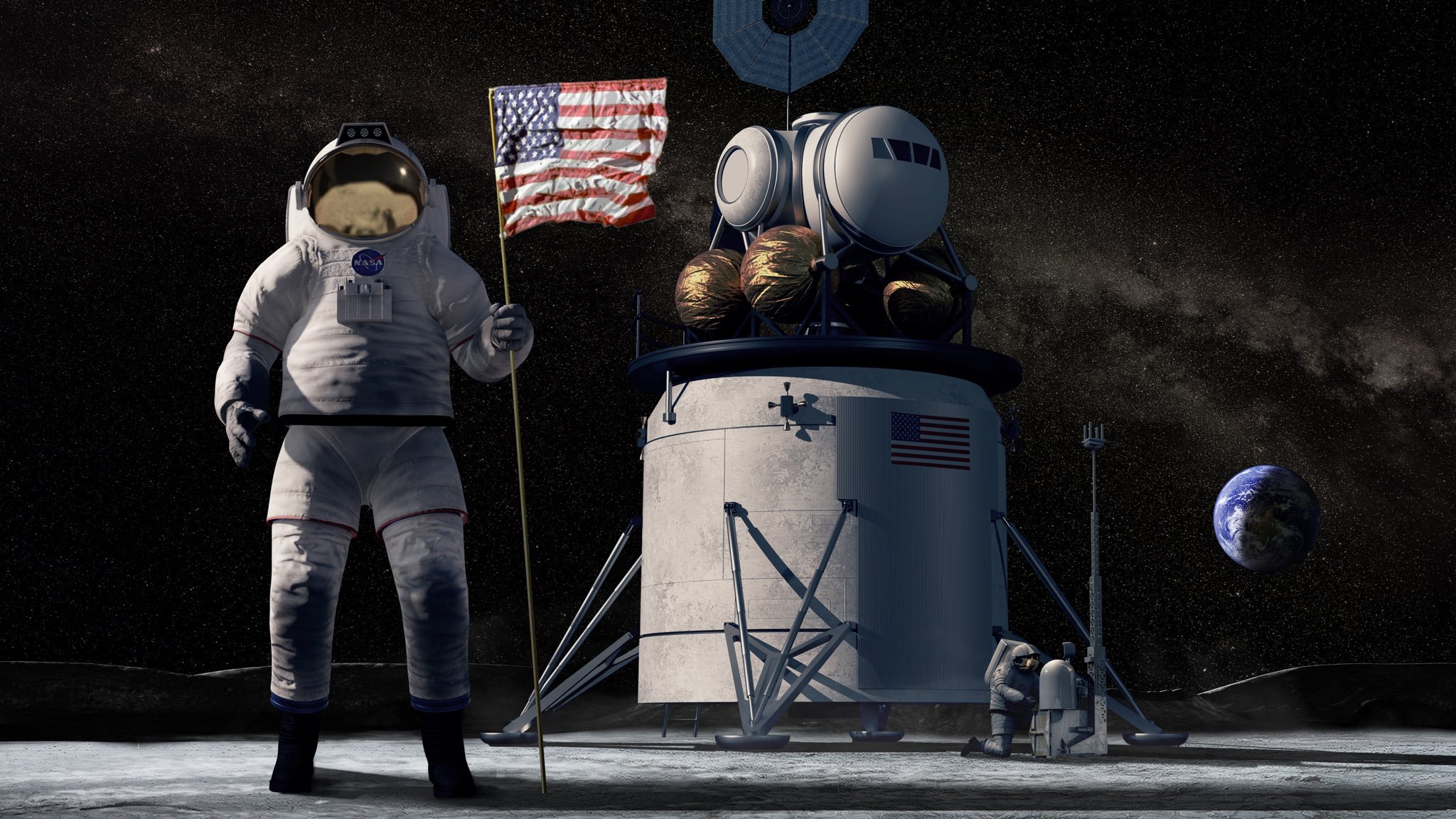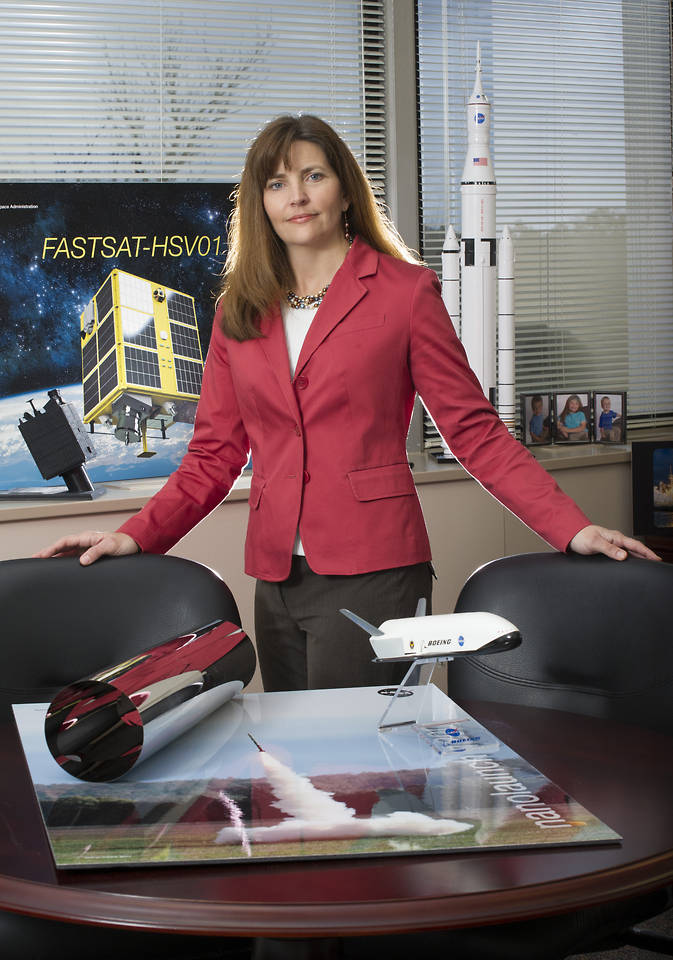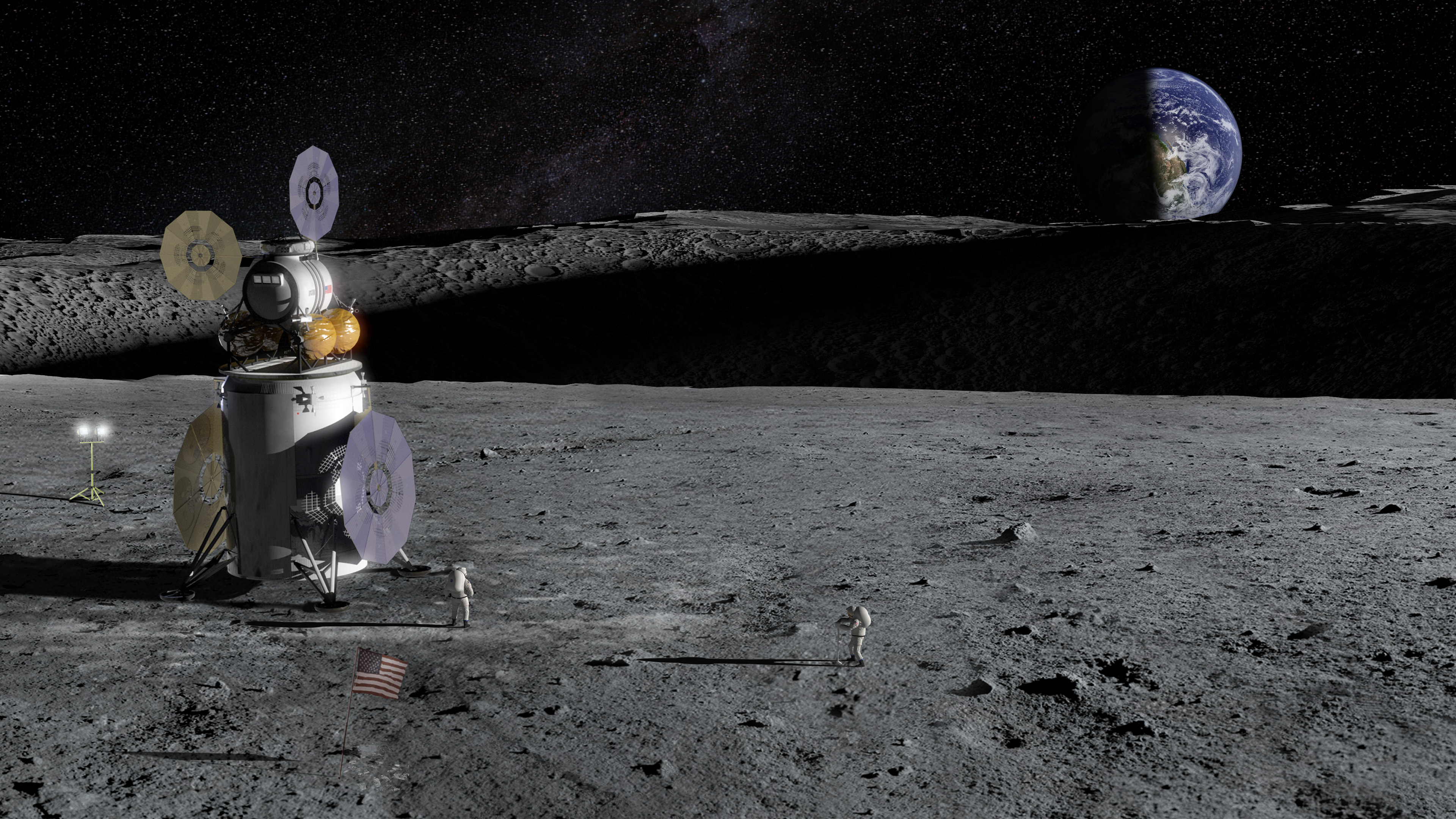NASA's 2024 Moon Goal: Q&A with Human Landing System Chief Lisa Watson-Morgan
This giant leap won't be easy.

HUNTSVILLE, Ala. — In July, Lisa Watson-Morgan was named program manager for NASA's Human Landing System (HLS). This program is tasked with developing the lander that will haul two astronauts — including the first female moonwalker — to the lunar surface in 2024. The HLS is also charged with establishing a sustainable, long-term presence on and around the moon by 2028.
Watson-Morgan sat down with Space.com here last month at the American Astronautical Society's 2019 Wernher Von Braun Memorial Symposium to discuss these ambitious goals. A 30-year NASA veteran, Watson-Morgan previously served as deputy director of the Engineering Directorate at NASA's Marshall Space Flight Center in Huntsville.
From the NASA government dance with contractors — now in Request for Information (RFI) status — to how best to make that White House-imposed deadline a reality, she candidly expressed her views on achieving the NASA Artemis objective of planting new footprints on the moon.
Related: NASA Is Now Accepting Proposals for Artemis Moon Landers
More: Can NASA Really Put Astronauts on the Moon in 2024?
What's at stake? The goal is to deliver a landing system to ferry astronauts and technology demonstrations to and from the moon's surface, yielding new science and material resources — and to leverage the moon as a proving ground for future Mars missions. Key to this vision is a small moon-orbiting space station called the Gateway, which will serve as a staging point for surface missions. NASA aims to start assembling the Gateway in 2022.
This fall, NASA intends to release a Broad Agency Announcement about industry concepts for the HLS. The agency is expected to announce its selections shortly thereafter, in the winter. .
But there are issues to surmount, as Watson-Morgan explained.
Get the Space.com Newsletter
Breaking space news, the latest updates on rocket launches, skywatching events and more!

Critical announcement
Space.com: What are your upcoming milestones for pushing forward with industrial partners on the HLS?
Watson-Morgan: We're now in the preliminary solicitation phase. Initially, we were planning on a much later moon-landing date. The vice president made that critical announcement for 2024, not two or three years down the road, which was the initial plan. The human landing system will have a deeper reliance on commercial [spaceflight] than even the commercial crew activities for the ISS [International Space Station]. He made a significant statement that it will be heavily reliant on leveraging the best of commercial.
Space.com: What, then, is the NASA role?
Watson-Morgan: We pivoted and said we can definitely roll with this. Not a problem. We still have to do a government reference design just to educate ourselves. What launch vehicles do we believe will be available in the 2024 timeframe? What's the tonnage they can carry? What elements or what modules do we need in order to successfully take humans to the moon? We were told that Gateway would definitely be our aggregation point. We want to be smart buyers by knowing our requirements, as this will be a firm, fixed-price contract with those contractors selected.

Significant deviation
Space.com: Shooting for 2024, I'd assume time is of the essence?
Watson-Morgan: This is a significant deviation for NASA and the government. Our role is now to write the requirements to inform industry of the interoperability standards. And all of this has to be done on the fast. It has to be done on the quick. We're going to look at industry and then [see] they have standards that either meet the intent or get close to the NASA standards, and we'll go through approvals for that very quickly. Typically, in the past, NASA is quite methodical … which is good. We're going to have to have an abbreviated approach to getting to approval for industry standards for design and construction … and how we're going to go off and implement this.
So, this is a big paradigm shift, I would say, for the entire NASA community, too. I'd say that the human landing system will have a deeper reliance on commercial than even the Commercial Orbital Transportation Services [COTS] work.
Space.com: What's expected of your industry contractors?
Watson-Morgan: We're going to try to minimize deliverables as much as we can.
What we have asked for is entrance into their electronic systems. They won't have to package up the data and spend all this time with the formalities. Our experts can go in and look at how they've handled issues.
What we're trying to do is marry up the best of both worlds: wide-open access insight versus this whole "Here are my deliverables; let me know in two months if you like it." That's not going to work for us. So our cadence will be fast.
In essence, we are paying for demonstrations followed on by service contract. So the government has not taken ownership of any of this hardware. It's still going to be commercially owned.
Related: NASA's Full Plate of Moon Missions Before Astronauts Can Go

'Humans are needy'
Space.com: What's different about this human landing system versus Apollo?
Watson-Morgan: The first human landing in 2024 will be not long. What is different is that we're going to the south pole of the moon, something not done before. The sun angle is very low. We'll scout it out. We think there could be valuable resources for humans because we're needy. We need water. We need air. We want to figure out what the south pole can provide us … and then what we need to bring back. We'll retrieve samples and set up experiments, just like Apollo did. We are looking at how all this helps establish a framework that will be extensible for us later to send humans to Mars.
Space.com: So the primary goals you have to meet with your commercial partners?
Watson-Morgan: Our first imminent goal is making 2024. How can industry help us get there in that schedule, getting there safely and on time?
Space.com: Given a first human lander mission, how do you extend the stay-time on the moon?
Watson-Morgan: The #1 goal is 2024. We definitely want to see industry planning to get to a more sustainable solution.
Space.com: How many industry contractors do you foresee awarding contracts to proceed with a human lunar lander?
Watson-Morgan: We will award possibly three … it could be four. All that is dependent on money … which, I don't know what that's going to be.
Gateway aggregation
Space.com: As of now, the Gateway is essential to your moving forward?
Watson-Morgan: Our plans and our requirements are geared towards the Gateway, aggregated hardware there. That is our plan and that's what we're going forward with.
Space.com: This year alone, we've had two new human-created craters on the moon. First, the Israeli mission, followed by India's attempt to robotically land on the lunar surface. How does that figure into technology needs for transporting humans to the moon's scenery?
Watson-Morgan: We definitely have areas of interest for what we call our advanced development line. We will have a team of government personnel working on high-risk areas. One of those issues is boil off of cryogenic propellants. As far as technologies, we do not want lower technological-readiness-level type stuff.
However, for sustained human lander missions, that's what we want to see … how extensible and how quickly can we get to a sustainable architecture on the moon.
- Moon Rush: These Companies Have Big Plans for Lunar Exploration
- Going Back to the Moon — for Good (Op-Ed)
- Moon Master: An Easy Quiz for Lunatics
Leonard David is author of the recently released book, "Moon Rush: The New Space Race" published by National Geographic in May 2019. A longtime writer for Space.com, David has been reporting on the space industry for more than five decades. Follow us on Twitter @Spacedotcom or Facebook.

Join our Space Forums to keep talking space on the latest missions, night sky and more! And if you have a news tip, correction or comment, let us know at: community@space.com.

Leonard David is an award-winning space journalist who has been reporting on space activities for more than 50 years. Currently writing as Space.com's Space Insider Columnist among his other projects, Leonard has authored numerous books on space exploration, Mars missions and more, with his latest being "Moon Rush: The New Space Race" published in 2019 by National Geographic. He also wrote "Mars: Our Future on the Red Planet" released in 2016 by National Geographic. Leonard has served as a correspondent for SpaceNews, Scientific American and Aerospace America for the AIAA. He has received many awards, including the first Ordway Award for Sustained Excellence in Spaceflight History in 2015 at the AAS Wernher von Braun Memorial Symposium. You can find out Leonard's latest project at his website and on Twitter.









